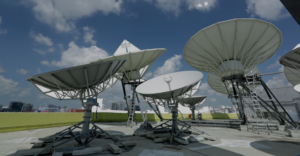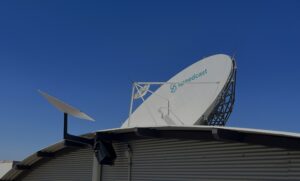5G is the biggest buzzword of the day in the mobile industry, in large part because mobile carriers are investing heavily in it and want us to share their excitement. In the satellite world, the buzz is about low Earth orbit or LEO constellations. We are often asked at Speedcast whether these two technologies will provide a dramatic change in the services, capacity and pricing we can offer customers.
What We Expect From LEO
Low Earth Orbit satellites are an exciting opportunity. For the first time, satellite can provide an office-like experience anywhere in the world – the internet you experience is the same as it would be at home or in the office. That’s because LEO satellites operate so close to Earth that it is like making a call from one city to another in the same country.
Yet GEO and MEO satellites have not had their day. Both have their place in the market, delivering service that meets their customers’ needs very well. Broadcast is one example: it can deliver one signal to millions or homes or cable headends.
What We Expect from 5G
Where does 5G fit in the communications mix? It’s an evolution of 4G/LTE technology, and the transition to 5G is going to be revolutionary in how we can get data to our sites because of much higher data rates. But 5G is not the answer to anything. If a customer is not working inside the cellular systems, it doesn’t provide the coverage they need, whether on a cruise ship in international waters, a mining camp or an energy platform. That’s where something like LEO fits really well, delivering an at-home experience with none of the delays you experience with GEO satellites operating far from Earth.
Making It Work
Speedcast has technologies, including SIGMA and SD-WAN, that can make the right choice of network for you. While far from the cellular network, it automatically selects the GEO, MEO or LEO service that best meets the requirement. But as 4G/LTE or 5G becomes available, it can detect that and automatically switch to the less expensive option. If the cellular connection fails for any reason, it switches to the always-on satellite connection.
Speedcast helps its customers by educating them on the alternatives available to them, so they can get the best technology fit. Let’s say they need to dispatch mobile units to deal with disaster. A 4G or 5G deployment could be the best answer.
For a cruise ship, it is going to be a combination of satellite technologies with cellular as an alternative. As the technology keeps evolving, our job is to make sure that customers get the best of breed solution all the time. ∎
Last updated 07/14/2020































